The Gambia is one of those delightful gems that we uncovered during our lengthy travels through West Africa. Have you ever seen a map of this country (hint, it is just below)?! It is something! In addition, this is the smallest country in mainland Africa.
Gambia travel is chock full of interesting and diverse flora and fauna. From the vast varieties of birds species found here to hippos, manatees and primates, there is so much to see and do!
Our Gambia travel guide shares 5 unique experiences in the Gambia including tons of Gambia adventure from the Tanji Bird Reserve, the Bijilo Forest Park, River Gambia tours, to the amazing Chimpanzee Rehabilitation Project Camp and the Roots tour. Gambia adventure abounds!
Map of The Gambia
This map illustrates all of the unique adventures and must visit places in the Gambia.
5 Unique Experiences in this Gambia Travel Guide
For such a tiny country, Gambia travel surprisingly offers endless opportunities to enjoy nature and the unique animals here. Many tourists flock to this country’s beaches. However, for us, after visiting nearby Cape Verde or even Popenguine in Senegal, we found these beaches to be quite dirty and underwhelming.
Here are the 5 unique experiences in the Gambia that we can highly recommend!
Tanji Bird Reserve
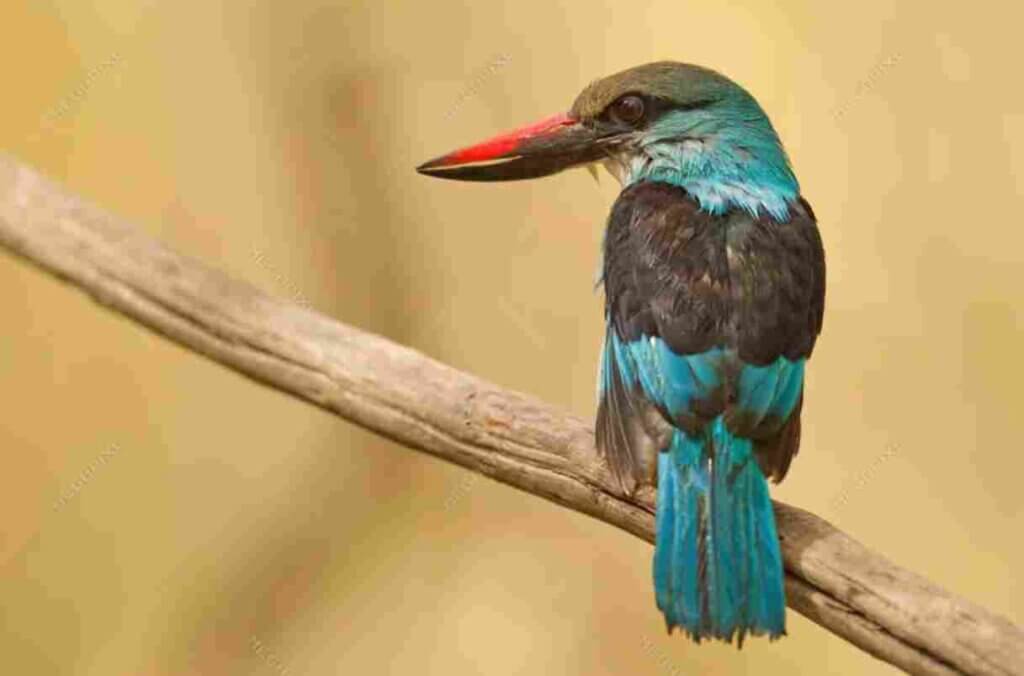
Tanji Bird Reserve is a fantastic place to get away to immerse yourself in the fauna and flora of Gambia adventrue. Here you will find 600+ species of birds, but even if you’re not the biggest birding enthusiast, this is still a beautiful part of the country to uncover.
This memorable excursion will see you explore some of the area’s highlights, giving you the chance to get up close to the local nature. We highly suggest arranging this outing to be early in the morning so that you can start just in time to see the sun rise over the waterways. However, this area is fun any time of the day, especially during the sunset.
You can either relax in a canoe with your guide paddling or opt to take a kayak out and make the journey under your own steam. In addition, there are trails here, so if you do not like being on the water but still want to enjoy this gorgeous nature, then consider the hking option.
For photographers you can either trek or take the the canoe/kayak out. The waterway is the better option for the best pictures as there’ll be plenty to photograph along the mangrove-lined tributaries at Tanji Creek. Your guide will help you spot the abundance of birdlife and, if you’re lucky, see local fishermen casting their nets. This is definitely a unique experience in the Gambia.
PRO TIP: One of the best guides for birding in this country is Blacka (Fimaea Fofana). The best way to reach Blacka is through a call to his What’s App or a recorded voice message, as Blacka does not read or write in English. Blacka’s Whatt’s App is: +220 719 8151
Bijilo Forest Park (Monkey Park)
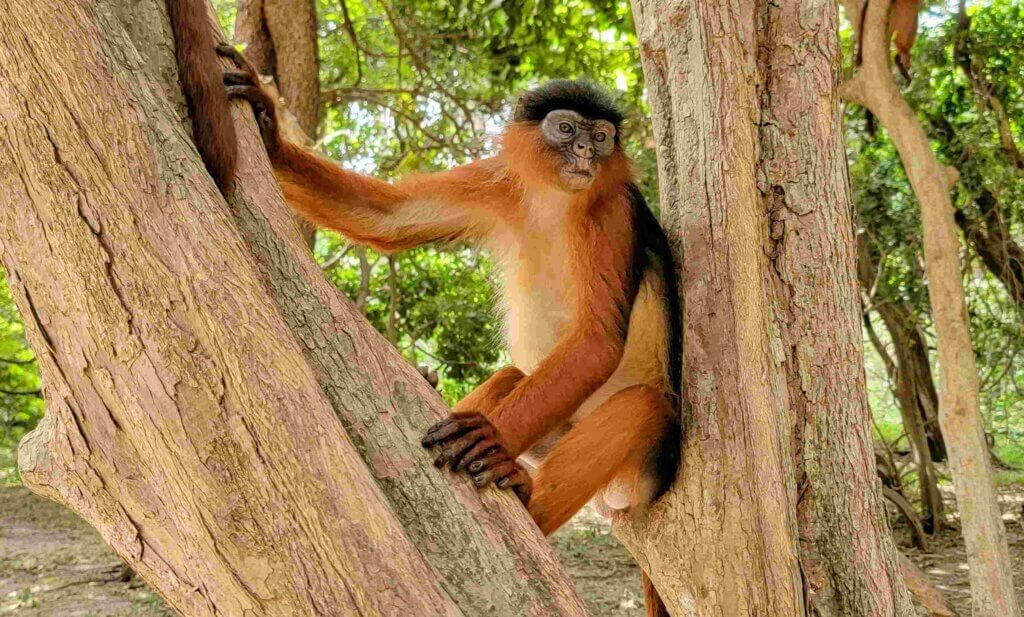
Just imagine: the salty bite of the Atlantic on your lips, warm sand between your toes, then a chorus of shrieks breaks the serenity. Welcome to Bijilo Forest Park, where beaches transition to a tangled jungle, just steps from the ocean. A true Gambia adventure!
In this small park, ancient baobabs stand like wrinkled sentinels. Mahogany giants stretch towards the sun, casting shade on playful monkeys. Bijilo Forest Park is teaming with diverse invertebrates, reptiles and mammals. There are troops of vervet monkeys, Temminck’s red colobus, Campbell’s mona monkey and patas.
There is a small entrance fee to this park and we were offered to purchase some food, so that we could hand feed the monkeys. Since we do not support such activities, we chose just to walk under the lush canopy and observe the antics of these cheeky monkeys.
Having had seen many vervet monkeys in Asia, I must say that I was a little scared of them. However, this park’s monkeys are not aggressive and are very gentle. Although if you have food, beware, as they just might jump on you. Albeit gently.
Seeing the Temminch’s red colobus monkeys was definitely a highlight in this park and is one of the 5 unique experiences in the Gambia that we enjoyed.
River Gambia Tour

The River Gambia runs through the majority of the country and is one of the not to be missed Gambia attractions. Most of the attractions are located either on the river or on it’s banks. These includes Kunta Kinteh Island, the River Gambia National Park, the Stone Circles of Gambia as well as the Chimpanzee Rehabilitation Project Camp (described below).
Trips on the river are multi day and range from 2 days – 8 days plus. There are multiple operators.
PRO TIP: For a local operator that is reliable, safe, eco-friendly and offers an authentic experience we would recommend Fair Play Gambia.
Chimpanzee Rehabilitation Project Camp
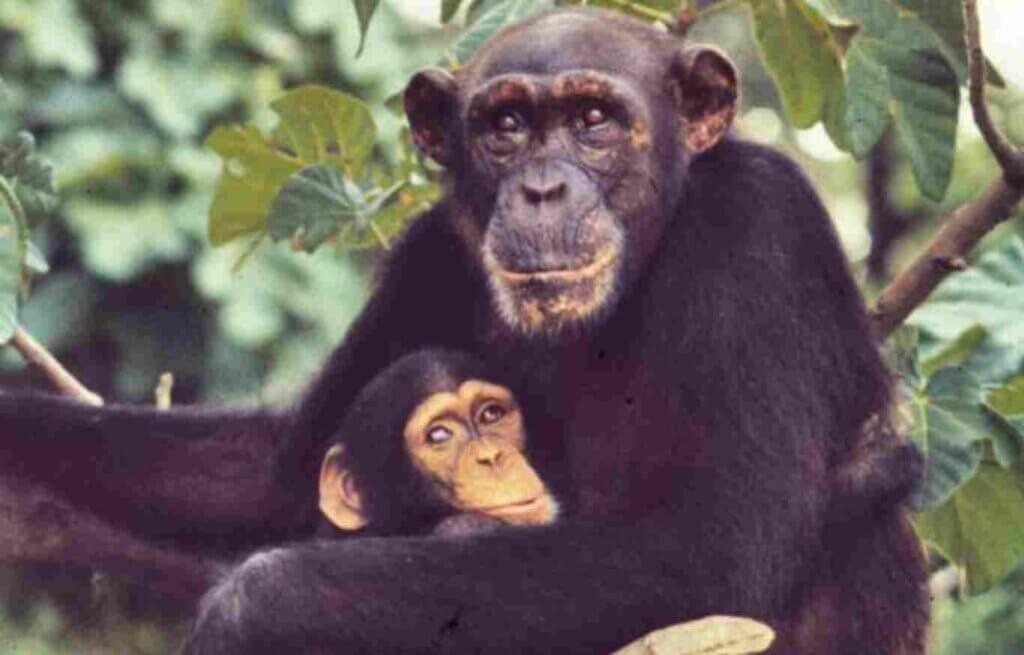
The Chimpanzee Rehabilitation Project Camp is located 270 Km inland from the coast, deep in the heart of the River Gambia National Park. This is a fantastic opportunity to observe chimpanzees in their natural habitat, as they live on 3 islands within the park. This unique conservation project began in 1979, and today is home to over 140 rescued and/or orphaned chimps.
Although visitors cannot enter the 3 islands that the chimps live on, visitors are able to view them from a boat. The Chimpanzee Rehabilitation Project offers simple, twin-bedded safari tents on raised platforms, all of which provide great views of the national park. Enjoy freshly prepared food while you soak up the sights and sounds of the river, gallery forest, and the main event – the wildlife.

The highlight of a stay here will be the daily two-hour boat trips around the islands, where you’ll witness the daily activities of the chimps, hippos, crocodiles and an array of birds who reside by the river. Although the chimps do fend for themselves, due to the growing population, their food supply is supplemented on the island riverbanks every other day. This is the best time for viewings, although it is unusual not to see them during each boat trip. Access to the islands for guests is prohibited.
There are several other activities available such as night walks to see bush babies and morning birdwatching talks and nature walks – often at no additional cost (although you may choose to tip the local guides).
Talk about a unique experience in the Gambia!
PRO TIP: To book directly with the Chimpanzee Rehabilitation Project Camp, send an email here: [email protected]
Roots Tour (Kunta Kinteh Island)
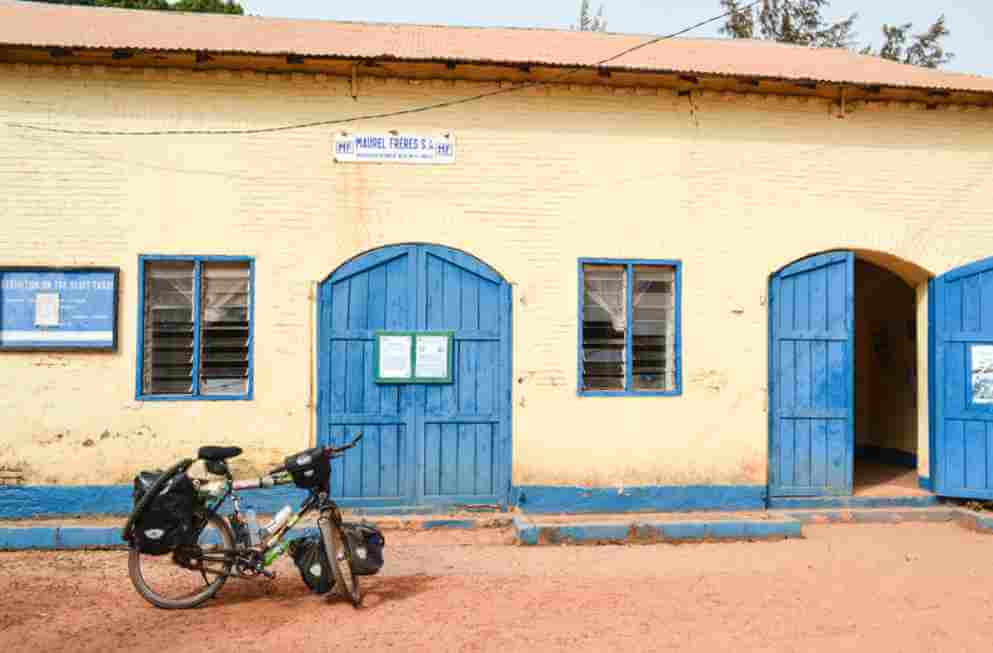
Since Alex Haley’s book ‘Roots’ was published in 1976, tourists have been flocking to the villages of Juffureh and Albreda in The Gambia, where the story of his ancestor, the legendary Kunta Kinteh first began. The book and subsequent film tell how the Mandinka warrior Kunta Kinteh was captured as a youth from Juffureh and sold into slavery in the United States. Today, around 2,000 people live in Juffereh and Albreda, including actual descendants of Kunta Kinteh’s family.
This is a day tour from Banjul and is done by a 4X4 and then on a boat. For the land tour, you will join the ferry across The Gambian River to the bustling north bank at Barra. Here, you will pick up your 4×4 vehicle for the 45-minute drive to Juffereh and Albreda, passing through local villages on the way.
On arrival, you will meet your official guide to learn all about the slave trade and life in the village. After this stop, a fishing boat is boarded to cross to the former slave colony, currently called Kunte Kinteh Island. The tour typically takes you on the island. However, we were not allowed to enter the island. Our briefing about the slave trade and the tortuous conditions in which the slaves were kept on the island, was done from the boat which circled the island.
The Museum of Slavery is also on the itinerary with most operators. We were able to see an authentic version of an actual slave ship. In addition, we had an opportunity to visit the children’s centre in the village, which gives local children facilities to learn and play outside school hours.
We also visited a crafts market where one can purchase traditional crafts made by local people and sweets. If you wish, you can hand out the sweets to the local children on your return journey. Depending on the season, you may also wish to stop off and see the locals harvesting their peanut crops. After the return ferry crossing, you will be taken back to your hotel.
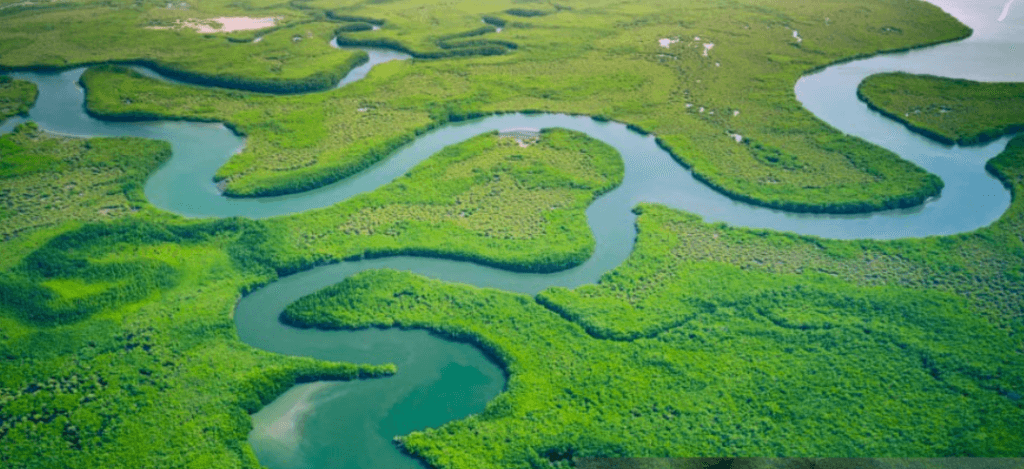
For the Roots tour there is another option where the tour agency will pick you up at your hotel and drive 30 minutes to Denton Bridge, where you will board a boat for the two-hour voyage to Kunte Kinteh Island. The rest of the tour will be similar to the 4X4 tour above, including visits to the village and museum.
There are a few well rated local tour operators that provide the Roots tour. Here are 2 that you may wish to consider: Tour Gambia and Bushwhacker Tours.
PRO TIP: Prior to making your means of travel decision, we suggest that you ask a few questions: 1. Is the vehicle a 4X4 and what condition is the car in? 2. For the boat: what type is it (try to get a catamaran)? Is it air-conditioned? 3. Will the boat be stopping at Kunta Kinteh Island or just circling it? 4. What is included in the price?: Are entrance fees included? Is a lunch included?
Logistics – Gambia Travel Guide
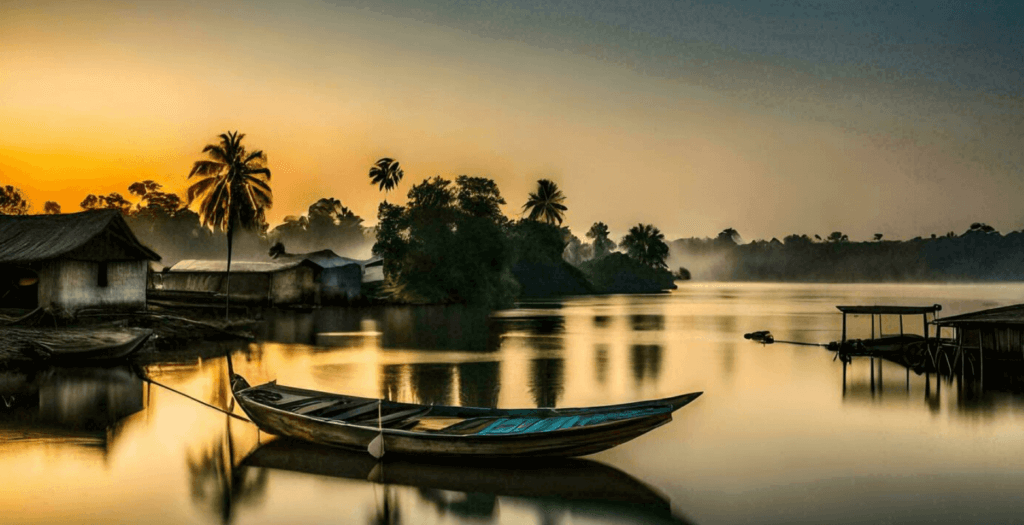
Below are some of the specific logistics about getting to and staying in The Gambia.
Best Time to Go – Gambia Travel
Many people from Great Britain and other EU countries enjoy spending time here. Why? Well, because the climate is incredibly temperate!
The best time for Gambia travel is during the dry season which runs between October and June. During this time, evenings are usually cooler and there are fewer mosquitoes around. In addition, the many dirt roads in the upcountry are less likely to be blocked. Beware, though – October to April is also the high season for tourists, with cheap, all inclusive coastal resorts filling up quickly.
The wet season is between June and October. Average temperatures here range from 18°C to 30°C during the dry season and 23°C to 33°C during the short wet season.
Guide/Driver – Gambia Travel
There are many reputable guides and drivers for your unique experiences in the Gambia. We found Pa Bojang through the Airbnb that we stayed in. From the moment that Pa picked us up from the airport he treated us like family. Pa is knowledgeable, has a decent car, is reliable and is kind. You can contact Pa on What’s App at: +220 351 5629
Currency
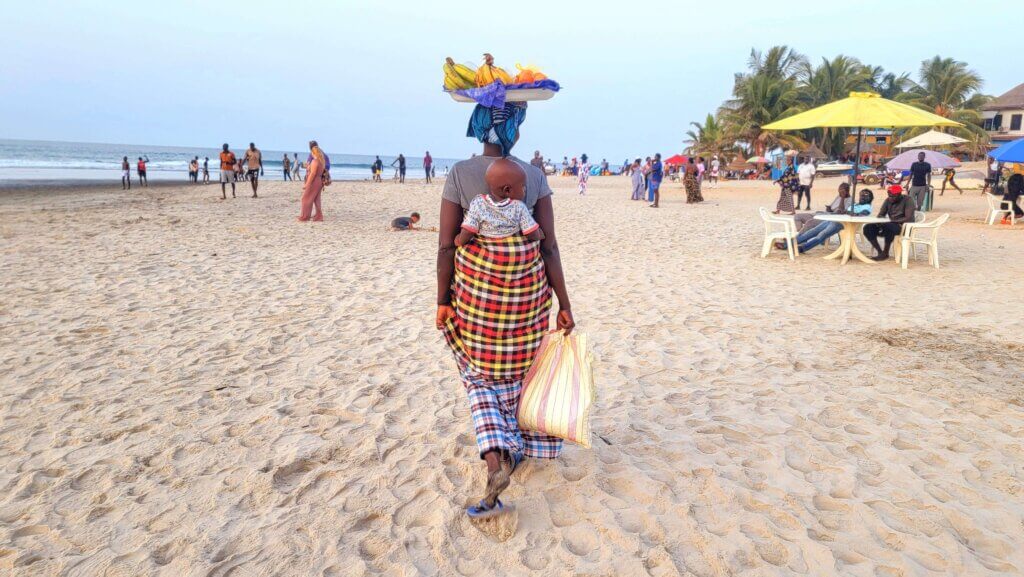
The Gambian Dalasi is the currency here and at time of writing, $1 USD was worth 69 Dalasies. The USD is accepted and there are many exchange kiosks for the USD as well as the Euro and the British Pound. Bring some large denominations of the USD to get the best rate in the exchange houses. $100 USD denominations get the best exchange.
In addition, there are many ATMs throughout the urban areas of the country.
Tourist Visa + Entry/Exit Tax – Gambia travel
At time of writing, 130 countries including Canada, Australia and Great Britain did not require a tourist visa to visit Gambia. However there are citizens of other countries who can either get a visa in advance or through the visa on arrival (VOA) process. For instance, a VOA for US citizens is $108 USD while an embassy visa is $200 USD.
Please note that there is also a $20 USD entry and a $20 USD exit tax at the airport which is per person.
Connectivity/SIM cards
The wifi in our AirBnB was fantastic and was acceptable in most restaurants and cafes. What is interesting, is that this country is one of the few that offers free SIM cards with no gimmicks or minimum top up levels.
These free SIM cards are from Africell or QCell, which are the two leading mobile operators in the country. They are available in their brick and mortar stores or at one of the airport kiosks at the Yundum/Banjul International Airport.
Safety
Out of all the countries that we visited in West Africa, the Gambia was the one where we felt the safest. However, most government advisories do provide warnings against travel here. Therefore, do your research and use common sense to stay safe.
Wrap Up – Gambia Travel Guide
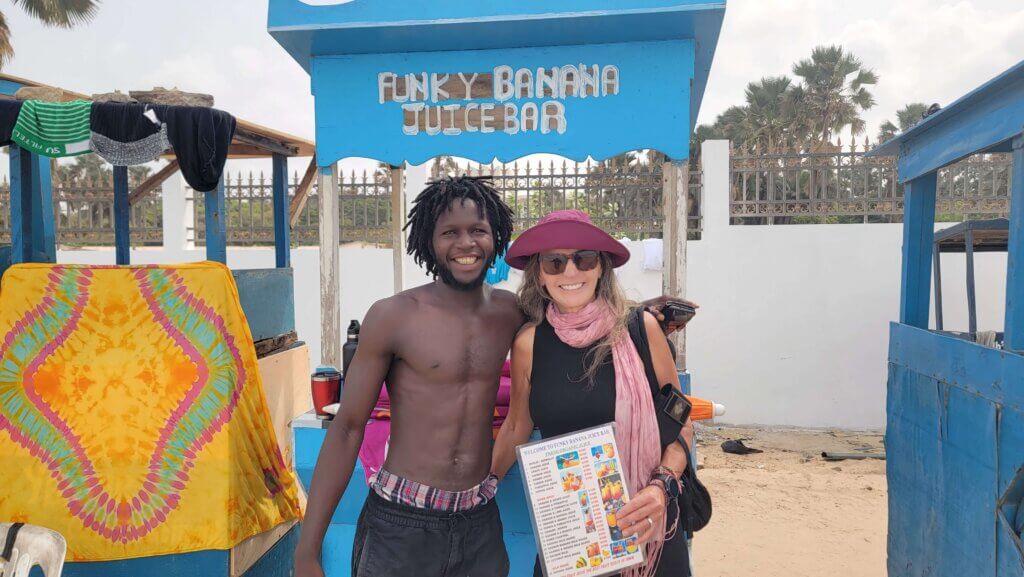
Our Gambia adventure was a wonderful surprise to us. There is so much gorgeous nature to explore either by kayak, boat or trail! In addition, the variety of birds, primates and other animals was outstanding.
This country offers many western modern amenities that one just doesn’t find in neighboring West African countries. For this reason the Gambia has a very large expat and European tourist presence. In addition, in Banjul and on the coast, there are many comforts of home. However, the true authenticity and adventure of this country comes through in it’s spectacular nature.
There are so many unique experiences in the Gambia to be had! The River Gambia cruise is definitely the highlight! We recommend a multi-day trip up to the Chimpanzee Rehabilitation Project Camp, while enjoying some of the many other river attractions along the way.
And if you are staying on the coast, then try the day trip to Kunta Kinteh island during one of your days there. A short drive to the Tanji Bird Reserve and the Monkey Forest is also a must.
Have you been on a Gambia adventure or did you have any of our 5 unique experiences in the Gambia? Or perhaps do you plan on visiting any of these West Africa countries? Which was your favorite? We would love to hear from you in the comments and let us know if we can answer any questions as you plan your next Gambia adventure!

